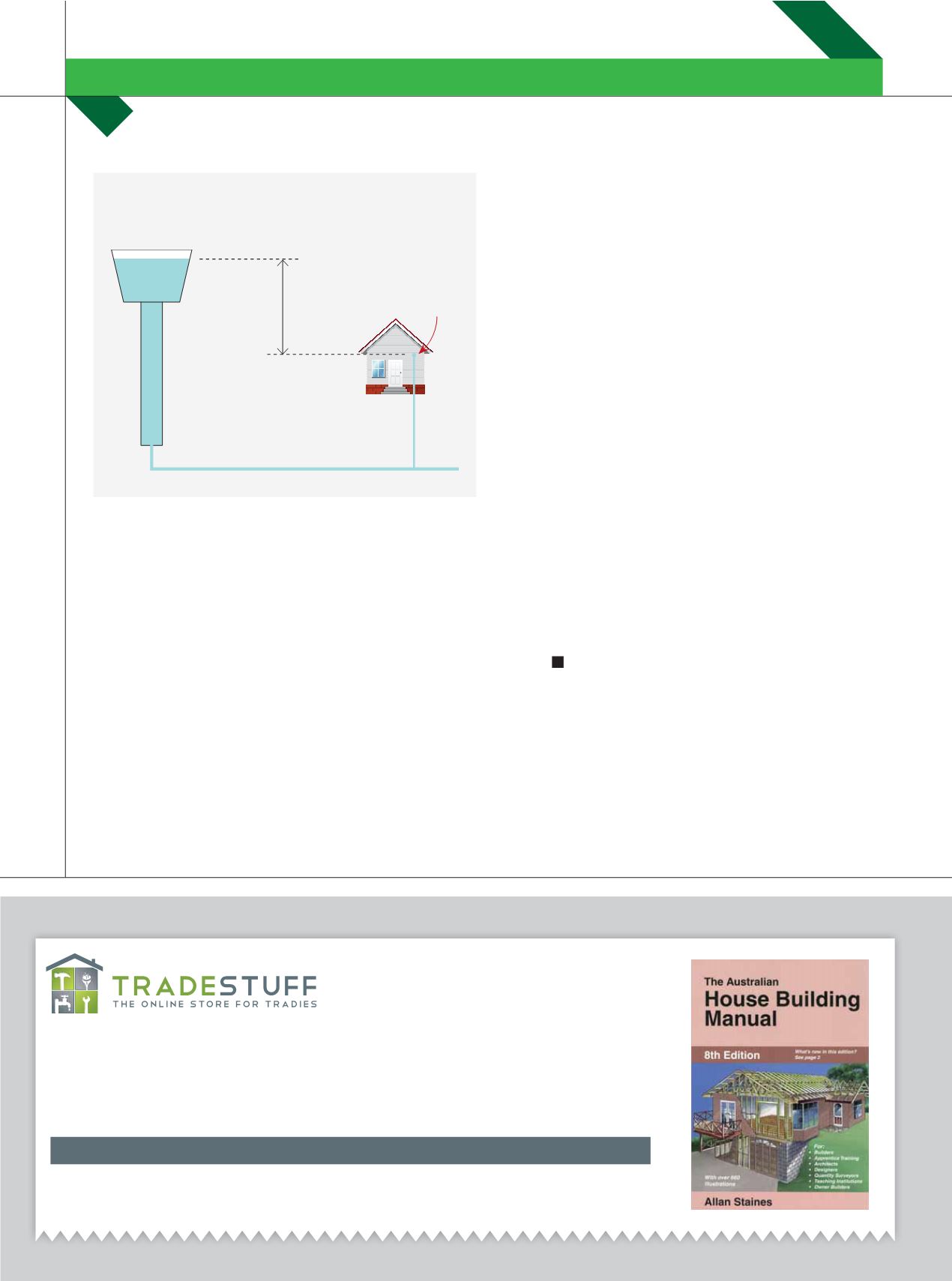

4 4
PLUMBING CONNECTION
AUTUMN 2016
is too low for the operational requirements, it is common to
install some type of pump to increase the system pressure.
If the system pressure is too high, Pressure reduction valves
can be used.
You may have also heard the term “Bar” used to describe
Pressure. One Bar is equal to 100kPa which is approximately
equal to the atmospheric pressure on Earth at sea level
(101.3kPa). Atmospheric pressure (abbreviated ATM) is
caused by the Weight of the air above the Earth. Although
air is a gas which contains lots of molecules flying around,
it also has a Density (
ư
= 1.23kg/m3), and therefore it also
has Weight. The Density (and Weight) of air is greatest at
the Earth’s surface. Air Density decreases as elevation
increases. This is because the further away from the Earth
the air molecules are, the less they are affected by gravity.
Most of the Earth’s air is contained in the troposphere which
is about 12km high. In addition, the Pressure at a depth of
Contact: Dr Terry Lucke
Associate Professor in Hydraulic and Civil Engineering
School of Science and Engineering
University of the Sunshine Coast
Building H1.Room 2.48
QLD 4558 Australia
Email:
tlucke@usc.edu.au10m under fresh water is also about 1 bar. So the Pressure
at 90m below the water surface is about 9 Bar, etc…
This is probably a good time to explain the two terms
“Absolute Pressure” and “Gauge Pressure.” Absolute
Pressure is referenced against an absolute vacuum. For
example, in the atmospheric air pressure explanation above,
if you left the Earth’s atmosphere and went into space,
there would be no more air molecules so there would be zero
Pressure (absolute vacuum).
Gauge Pressure is referenced against atmospheric
pressure (i.e. 1 ATM). For example, when you check the
pressure in your car tires, the pressure shown is the amount
of extra pressure above 1 ATM. Therefore it is also possible
to have negative Gauge Pressures (i.e. below atmospheric)
under vacuum or siphonic conditions. However, it is not
possible to have a negative absolute pressure as this is
physically impossible (i.e. you can’t have negative numbers
of molecules). Generally when we are talking about
Pressures, we are talking about Gauge Pressures.
I hope this article has helped clarified some of the
fundamental principles of Pressure for you. In the next
article, I will clarify some of the fundamental principals
regarding friction and form losses and why they cause
pressure drops in fluid systems. Please feel free to email me
any comments, questions or suggestions at
tlucke@usc. edu.au.HYDRAULIC CLASSROOM
DR TERRY LUCKE
FIGURE 3 – WATER PRESSURE EXAMPLE 2
Water Main
Avaliable
Head (m)
Shower
Rose
Water Tower
SEE ORDER FORM ON
PAGE 98
OR
PHONE 1800 623 214
ORDER ONLINE @
WWW.TRADESTUFF.COM.AU$45.95 (includes postage & handling) ....................................................................................... CODE 391
The Australian House Building Manual
This book is worth its weight in gold to all apprentices, builders, designers and training institutions. It
covers brick veneer, weather-board, cavity brick and concrete block construction, and provides over 550
detailed illustrations, and loads of practical know how in line with industry requirements, the BCA and
Australian Standards. As a hot tip place your order now, as books by this author are in strong demand.
















